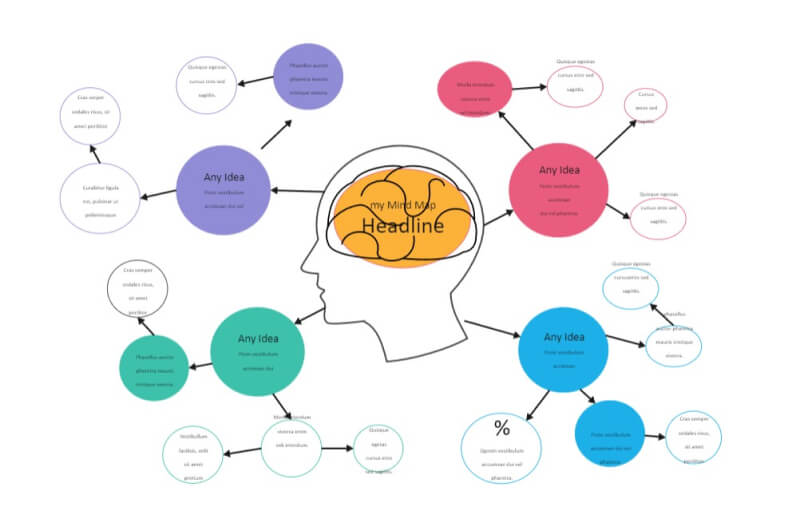What is the Purpose of Brainstorming During the Development of an Action Plan?
Question:
What is the purpose of brainstorming during the development of an action plan?
A. It keeps the list of action steps to a minimum.
B. It increases the likelihood that key points will be included.
C. It ensures that only essential items are included on the list of action steps.
D. All of the above.
Answer: B. It increases the likelihood that key points will be included.
What is the Purpose of Brainstorming During the Development of an Action Plan?
When embarking on the journey of creating an action plan, brainstorming emerges as a pivotal step. But why is brainstorming so essential? What role does it play in ensuring the success of the action plan? This blog delves into the purpose of brainstorming during the development of an action plan and how it significantly increases the likelihood that key points will be included, thus enhancing the plan’s effectiveness and completeness.

The Essence of Brainstorming
Brainstorming is a collaborative process where team members come together to generate ideas, share their thoughts, and suggest solutions. This method fosters creativity and encourages participants to think freely without the fear of judgment or criticism. Here’s why brainstorming is indispensable:
Diverse Perspectives: In a brainstorming session, each participant brings a unique viewpoint. This diversity in thought and perspective is crucial as it allows the team to see the problem or task from different angles. It broadens the scope of the discussion and ensures that various aspects of the problem are considered.
Unleashing Creativity: Brainstorming creates an environment where creativity can flourish. Since there are no bad ideas during brainstorming, participants feel more comfortable sharing unconventional or out-of-the-box ideas. This can lead to innovative solutions that might not have been considered in a more restrictive setting.
Fostering Collaboration: Teamwork is at the heart of brainstorming. The process encourages communication and collaboration among team members, building a sense of unity and shared purpose. When people work together towards a common goal, they are more likely to come up with comprehensive and effective solutions.
Ensuring Comprehensive Coverage: The primary purpose of brainstorming is to ensure that key points are included in the action plan. By generating a wide range of ideas, the team can review and identify the most important points, ensuring nothing critical is overlooked.
The Critical Role of Brainstorming in Action Plan Development
Developing an action plan without brainstorming can lead to a narrow and potentially incomplete plan. Here’s how brainstorming significantly contributes to the development of a robust action plan:
Idea Generation: Brainstorming is a powerful tool for generating a vast array of ideas. This is essential in the initial stages of action plan development. The more ideas you have, the better the chances of finding effective and innovative solutions.
Identifying Key Points: During brainstorming, the team can identify and discuss key points that need to be included in the action plan. This ensures that all essential aspects are considered, leading to a more thorough and effective plan.
Prioritization: Once all ideas are on the table, the team can prioritize them. They can determine which points are most critical and should be addressed first. This helps in creating a structured and actionable plan.
Spotting Potential Gaps: Brainstorming helps in identifying potential gaps in the action plan. By discussing various ideas, the team can spot any missing elements and include them before finalizing the plan.
Steps to Conduct an Effective Brainstorming Session
To reap the benefits of brainstorming, it’s important to conduct the session effectively. Here are some steps to guide you:
Set Clear Goals: Before starting the brainstorming session, define the goal. Make sure everyone knows what the action plan aims to achieve. Clear goals provide direction and focus for the brainstorming process.
Create a Positive Environment: Ensure the brainstorming environment is open and positive. Encourage participants to share their ideas without fear of criticism. This openness is key to generating creative and diverse ideas.
Use a Facilitator: A facilitator can guide the session, keeping it on track and ensuring that everyone gets a chance to contribute. The facilitator helps manage the flow of ideas and maintains the session’s focus.
Record All Ideas: Document all ideas shared during the session. This ensures that no idea is lost and can be reviewed later. Recording ideas also helps in tracking the brainstorming process and the evolution of thoughts.
Encourage Participation: Make sure everyone is involved in the session. Sometimes, quieter team members have valuable insights, so encourage them to share their thoughts. Inclusive participation ensures a richer pool of ideas.
Review and Refine: After generating ideas, review them with the team. Refine the list to identify the most important points to include in the action plan. This step is crucial for filtering out impractical ideas and focusing on viable solutions.
Real-World Examples of Brainstorming in Action Plan Development
Let’s explore some real-world examples where brainstorming played a crucial role in developing effective action plans:
Product Development: A tech company was in the process of developing a new product. The team conducted several brainstorming sessions to gather ideas for features, design, and functionality. This collective effort led to the creation of a product that not only met customer needs but also stood out in the market.
Event Planning: An event planning team used brainstorming to organize a large conference. They discussed various aspects such as guest speakers, venue arrangements, and marketing strategies. By covering all bases, they ensured the event was a success, attracting a large audience and receiving positive feedback.
Marketing Campaigns: A marketing team faced the challenge of creating a unique advertising campaign. Through brainstorming, they generated a variety of ideas and concepts. By combining the best elements of each idea, they developed a compelling and effective campaign that resonated with their target audience.
Community Projects: A community organization wanted to launch a project to improve local parks. During brainstorming sessions, members discussed potential activities, fundraising ideas, and volunteer recruitment strategies. This comprehensive approach helped them create a detailed action plan that successfully revitalized the parks.

Benefits of Brainstorming Beyond Idea Generation
While generating ideas is a primary benefit of brainstorming, the process offers several other advantages that enhance the overall action plan:
Building Team Morale: Brainstorming sessions can boost team morale. When team members feel their ideas are valued and considered, it increases their sense of ownership and commitment to the project.
Enhancing Problem-Solving Skills: Regular brainstorming helps team members develop better problem-solving skills. They learn to think creatively and collaboratively, which can be beneficial in other areas of their work.
Encouraging Continuous Improvement: Brainstorming promotes a culture of continuous improvement. By regularly seeking new ideas and solutions, teams can keep evolving and improving their action plans and strategies.
Facilitating Change Management: When developing action plans that involve significant changes, brainstorming can help manage the change process. By involving team members in generating ideas, it becomes easier to gain their buy-in and support for the changes.
Overcoming Common Brainstorming Challenges
Despite its benefits, brainstorming can face some challenges. Here are ways to overcome them:
Dominant Participants: Sometimes, a few participants may dominate the discussion. To prevent this, the facilitator should ensure that everyone has an equal opportunity to contribute.
Idea Overload: Generating too many ideas can be overwhelming. To manage this, categorize ideas and prioritize them based on relevance and feasibility.
Lack of Focus: Without clear goals, brainstorming sessions can lose focus. Setting specific objectives at the beginning can help maintain direction.
Groupthink: Groupthink occurs when participants conform to a consensus without critical evaluation. Encourage diverse opinions and critical thinking to avoid this pitfall.
Additional Resources and Further Reading
To dive deeper into the benefits and techniques of brainstorming during action plan development, check out these resources:
- MindTools: Brainstorming – This site provides comprehensive guidelines on how to brainstorm effectively.
- Creativity Techniques: Brainstorming – Explore various creativity techniques and methods for effective brainstorming.
- Brainstorming – Stanford d.school – Learn about the brainstorming rules and practices advocated by Stanford’s d.school.
- Harvard Business Review: Better Brainstorming – This article discusses how to improve brainstorming sessions to get the best results.
- Innovation Management: The Importance of Brainstorming – Understand why brainstorming is crucial for innovation and strategic planning.
Conclusion
Brainstorming is an essential part of developing an action plan. It ensures that key points are included by generating a diverse range of ideas, encouraging creativity, and fostering collaboration. By following effective brainstorming practices, teams can create comprehensive and robust action plans that address all necessary aspects and lead to successful outcomes.
In answering our initial question, the correct option is B: It increases the likelihood that key points will be included.
By incorporating brainstorming into your planning process, you ensure a thorough and well-rounded action plan. This collaborative approach not only enhances the plan’s effectiveness but also builds a stronger, more cohesive team ready to tackle challenges and achieve goals.





